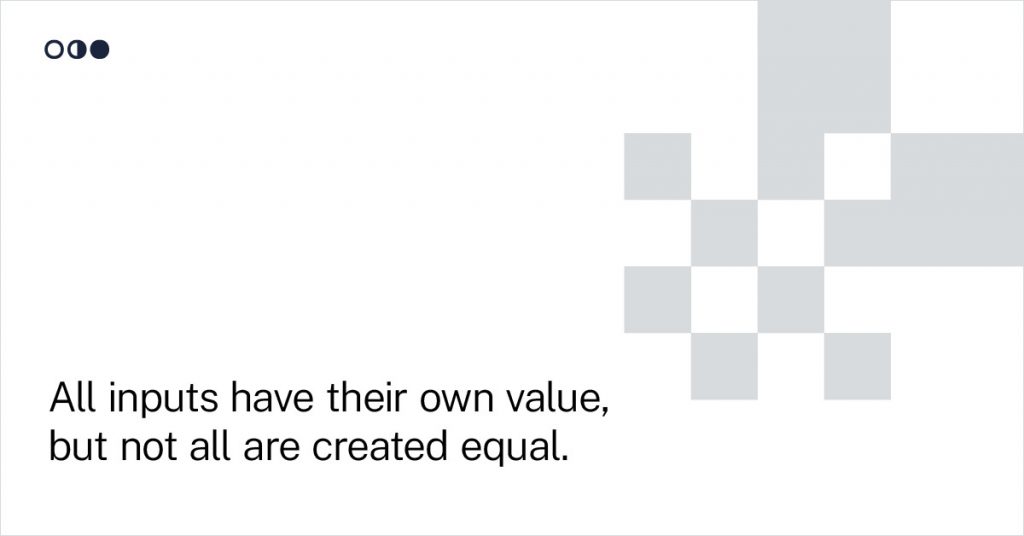All About That Input: How to Prioritize Feedback for User Stories
Too much feedback = too much drama for user stories?
It doesn’t have to be! In this article, we’ll dive into how to prioritize different inputs for user stories, and why research remains essential.
This article is Part 2 of our User Stories & Analysis series – so don’t forget to check out Part 1, where we explore why user stories are only valuable when paired with research-based analysis!
Ever tried catching a bartender’s attention during happy hour? With everyone else shouting their orders (and waving their money) at them, more often than not, your polite request for a beer will go unnoticed at first. After all, the bar is simply too noisy for the bartender to hear you properly.
Interestingly, the same thing may often occur during the many different stages of product development. Take user stories, for example: as we discussed last time, the right type of analysis is crucial for getting them just right!
But – as anyone who has ever been part of a product team knows too well – analysis isn’t the only input when it comes to user stories.
Multiple sources of feedback can help determine the path a product (and, by extension, user stories) should take. From customer support to competitor analysis, to stakeholder sessions and research findings.
The question is, which source should we zero in on?
Stakeholders and User Stories: A Love (?) Affair
When it comes to building and launching a new product, it’s obvious that some people will care more about it than others. Key stakeholders, for instance – like the investors or founders of the company behind the product – most often have strong ideas of what they want that product to look like, especially when it comes to smaller projects or startups.
Which is totally fine! However, picture the following scenario: your team is busy putting together user stories for the next stage of development for your beloved product, but you’ve just had an amazing idea for a feature that you’re sure will make the product stand out on the market.
Now what’s your team supposed to do? Abandon all plans and start working on new user stories to support this feature? Or flat-out resist the idea and continue working on what your team was doing originally?

The answer, of course, is neither.
All inputs have their own value, but not all are created equal – and it’s essential that everyone recognizes the product development team’s responsibility to decide which inputs to focus on.
And while stakeholders’ inputs are always important, other sources of feedback – like the afore-mentioned customer support, competitor analysis, but also user research and market trends – can also provide valuable insights when it comes to crafting the best user stories for your product.
The key thing to remember? Balance. Balance is essential.
Balance Makes The World Go Round
Finding the sweet spot in the midst of all those different sources of feedback – from stakeholders’ visions to end user’s needs – may be slightly tricky, but it’s absolutely doable.
Unsurprisingly, the best way to do it is to reach for the same tool that takes user stories from good to great: good old user research, of course!
By gathering data about your products’ target users, it’s so much easier for product teams to make informed decisions about what feedback (and features) to prioritize, what to push back to the next sprint, and what to disregard entirely for now – a.k.a. how to achieve the perfect balance between all those inputs for your user stories.
…Of course, once your team possesses this magical knowledge, they still have the uncomfortable task of convincing everyone why their feedback may or may not have made the cut this time around. Especially if some of the parties involved haven’t yet experienced the value of user research first-hand; something that also comes up when the question of “why don’t we skip user research anyway?” arises (as, sadly, it sometimes does).
So what can we do to persuade these parties of user research’s validity and value, especially when it comes to user stories and features?
I’m so glad you asked!
There are three paths you can follow to showcase the value of user research to stakeholders, but also to leadership and the company as a whole. The main thing these three approaches have in common is visibility, transparency, and connection.
When you make the impact of your work and user research clear to your peers, and make it visible in an easy-to-digest way, you greatly increase your chances of stakeholders heeding the gospel of user research next time it comes up in a “make or break” meeting.
Approach 1: Showcase tangible results
One surefire way to demonstrate the use of user research and analysis is to present case studies, success stories and other examples of using analysis techniques to create better, more successful products. Data-driven results (especially revenue-driven results) are sure to capture the attention of most stakeholders with a vested interest in your company’s overall financial success.
Example: “Since our qualitative user interviews showed a wish for the ability to export users’ account information into a CSV format, we created a user story based on this feature, which ultimately led to an engagement uptick of 32% in our beta release, leading to a revenue increase of 300.000 EUR per quarter.”
Approach 2: Spell out the benefits
It’s also important to explain the different ways investing in user research can save time, money, and headaches for everyone involved in the product development process.
Of course, gaining a better understanding of users’ needs and preferences enables teams to build user stories (and products) that directly address those needs, avoiding costly redesigns or pivots in the future.
Example: “Our user stories focusing on the product’s interactive chat function directly – which we created as a response to our user interviews – led to us redefining our product’s primary function to be a platform-independent communication tool early on in the process (as opposed to its initial function of enabling social connections). This has helped us automate vital development processes, which allows us to allocate cost-efficient developer time on releasing new key features.”
Approach 3: Get people involved
Last but not least, don’t underestimate the power of shared knowledge!
By involving more invested parties in the user research process, everyone can gain a better understanding of how the product is being received and how it can be improved (not to mention that it will lead to a more collaborative and successful project overall).
Example: “By opening up the evaluation of our user surveys to other product stakeholders, we created some common ground to plan our upcoming user stories and features. It also created a more nuanced understanding of the results, and allowed us to create a more cohesive user journey for our customers, from Marketing, to Sales, to Product, to Customer Success, and beyond.”

No More “He Said, She Said”, Only User Stories
Once we’ve aligned everyone’s thoughts on and attitudes towards user research (and how that ensures product teams can build the products their users actually want them to!), as well as deciding which research-backed inputs to focus on when creating our user stories, all we have to do is, well, create our user stories.
Creating user stories does come with its own set of challenges, e.g. how do you make sure they’re actionable by developers?
I recommend using the INVEST framework, that can help break down user stories into smaller, more specific tasks (but that’s a topic for the upcoming Part 3 of this User Stories & Analysis series, so stay tuned!)
One thing’s for sure: the more people understand the significance of research and analysis when it comes to user stories, the smoother our product development processes will become in general. Which is something we all want!
And remember, if you want to discuss any of this in more detail, we’re always happy to talk more about user stories, user research, or just our own thoughts on product development in person – get in touch with us here and let’s have a chat.

